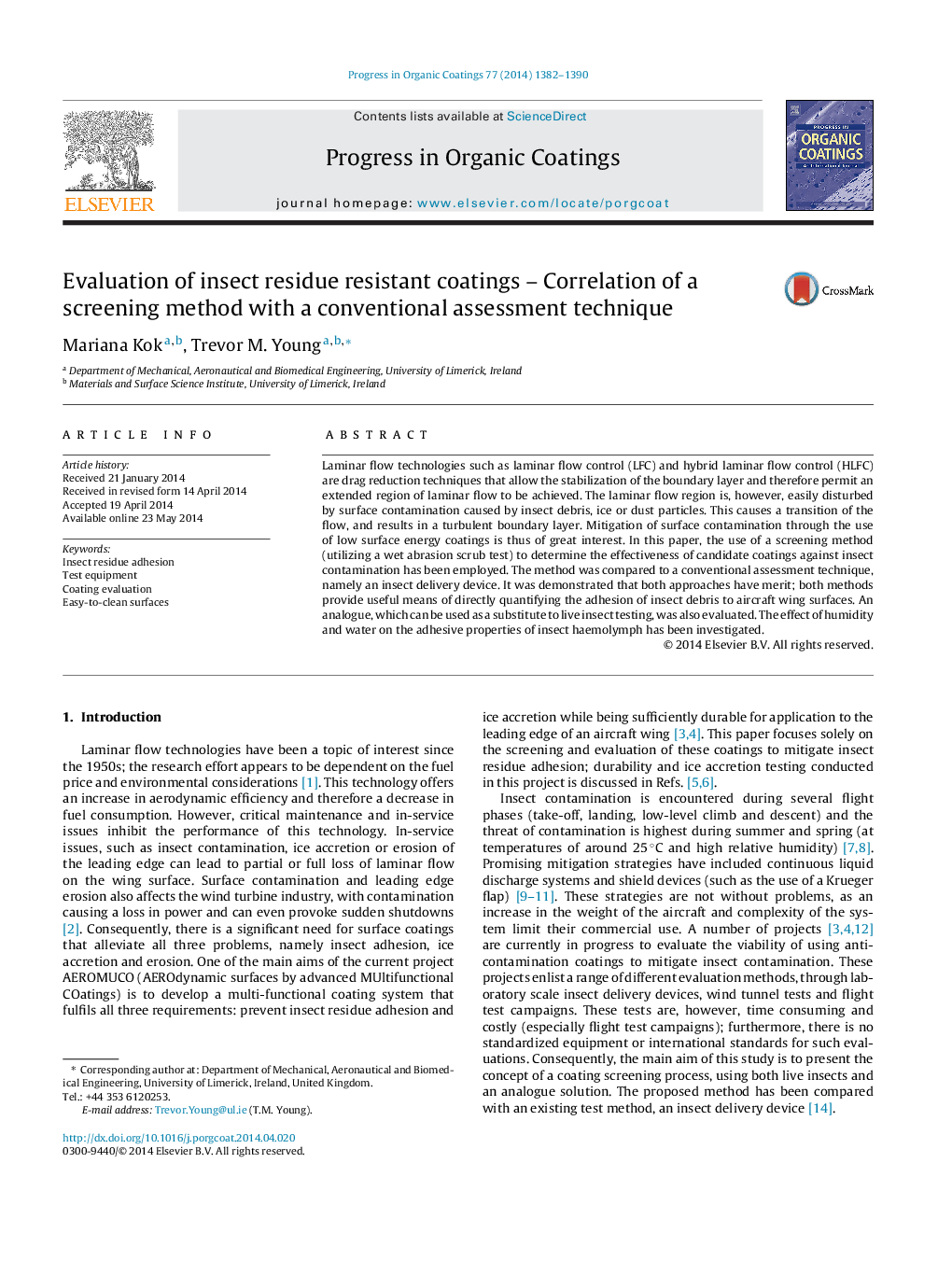| Article ID | Journal | Published Year | Pages | File Type |
|---|---|---|---|---|
| 692620 | Progress in Organic Coatings | 2014 | 9 Pages |
Abstract
Laminar flow technologies such as laminar flow control (LFC) and hybrid laminar flow control (HLFC) are drag reduction techniques that allow the stabilization of the boundary layer and therefore permit an extended region of laminar flow to be achieved. The laminar flow region is, however, easily disturbed by surface contamination caused by insect debris, ice or dust particles. This causes a transition of the flow, and results in a turbulent boundary layer. Mitigation of surface contamination through the use of low surface energy coatings is thus of great interest. In this paper, the use of a screening method (utilizing a wet abrasion scrub test) to determine the effectiveness of candidate coatings against insect contamination has been employed. The method was compared to a conventional assessment technique, namely an insect delivery device. It was demonstrated that both approaches have merit; both methods provide useful means of directly quantifying the adhesion of insect debris to aircraft wing surfaces. An analogue, which can be used as a substitute to live insect testing, was also evaluated. The effect of humidity and water on the adhesive properties of insect haemolymph has been investigated.
Keywords
Related Topics
Physical Sciences and Engineering
Chemical Engineering
Process Chemistry and Technology
Authors
Mariana Kok, Trevor M. Young,
